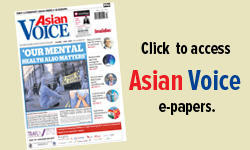Breast cancer awareness in the South Asian community has been limited by cultural taboos and modesty, leading to late diagnoses and poorer outcomes. However, social media, community outreach, and public figures are helping break the stigma. Promoting early detection and addressing post-treatment care remain crucial in improving outcomes for South Asian women.
Asian Voice spoke to Dr Kai, a dynamic GP with 12 years of experience in aesthetics, combining medical expertise with a passion for well-being. Focused on women’s health and lifestyle medicine, she takes a holistic approach to patient care. Recently, she launched the podcast ‘Talking Longevity’ with Dr Lord, offering evidence-based insights on biohacking, aesthetics, and longevity.
What are the key factors contributing to the rising awareness of breast cancer among South Asian women?
Awareness of breast cancer has grown significantly. Growing up, I never discussed women’s health with my mother—despite her openness compared to many South Asian parents. Now, as a 40-year-old GP, I see a shift. Teenage girls visit with their Asian mothers to discuss breast lumps and vaginal health, and my friends teach their daughters to check for lumps. While not universal, this change is encouraging.
Despite its flaws, social media has played a crucial role in normalising intimate health discussions. Campaigns and influencers have brought breast cancer awareness into homes, especially among younger generations.
Public figures like Bollywood actress Manisha Koirala and filmmaker Tahira Kashyap have helped destigmatise breast cancer by openly sharing their experiences. Their bravery has fostered intergenerational conversations and improved education. Within the NHS, inclusivity has improved, with community outreach teams offering education in local languages. South Asian countries like India, Malaysia, and Sri Lanka now provide discounted or free screenings, furthering awareness and early detection. However, awareness of breast cancer’s effects—especially treatment-induced menopause and its impact on intimate health—remains lacking. Issues like vaginal dryness, itching, and reduced libido must be discussed more openly.
How do cultural beliefs within the South Asian community impact early detection and treatment of breast cancer?
As a teenager, I hesitated to discuss intimate health issues unless they were severe. While I might have mentioned a breast lump, vaginal health felt much harder to address. In many South Asian families, modesty makes conversations about breast, vulval, or vaginal cancers difficult, and some even avoid seeking medical help, especially from male doctors, delaying early detection.
Awareness is growing, even in more reserved communities, with more women seeking help for lumps or skin changes. However, fewer women address the lasting effects of cancer treatments, especially those affecting the vulva or vagina. Caress Flow and many healthcare professionals aim to change this by raising awareness and highlighting available treatments. Through open discussions and published results, we hope to show how treatments like Caress Flow can ease or eliminate discomfort.
How does Caress Flow help address cultural and emotional needs during breast cancer treatment, particularly within the South Asian community?
Cultural and emotional needs are deeply personal and must be addressed individually. When Caress Flow approached me, they emphasised working only with experienced professionals who understand women’s health. Caress flow aims to spread the awareness of women’s health to all cultures. By providing information on intimate health issues and explaining how their non-invasive device can help, they hope to provide their part in breaking cultural barriers.
Women should know they don’t have to suffer in silence. If hormonal creams aren’t an option for vaginal dryness, treatments like laser or radio-frequency microneedling can be effective—though costly and slightly uncomfortable. After reviewing the evidence, I introduced Caress Flow to my clients and have seen fantastic results—not just in breast cancer survivors but also in those with hysterectomies, menopausal dryness, recurrent thrush, and urethral burning. This pain-free, minimally invasive treatment has no downtime, making it ideal for conservative South Asian women who may prefer discretion and a quick return to normal activities, including intimacy.
What advice would you give to South Asian women regarding lifestyle changes to reduce their risk of developing breast cancer?
Obesity is a big risk factor for breast cancer. Unfortunately as Asian women we are genetically at risk of central obesity. It is vital, particularly during perimenopause and after menopause itself, to maintain a healthy diet. I personally think it is worth speaking with a dietician or lifestyle coach to help start the process and understand what foods should be avoided and what would benefit you.
All women should know their family history and check their breasts regularly. I advise my patients to do daily checks for a month to understand what’s normal, as most breasts are naturally lumpy. Recognising the normal helps spot the abnormal. Breastfeeding for at least six months reduces breast cancer risk. Limiting alcohol and smoking is also crucial, especially for those with a family history. Stress is another factor—while unavoidable, managing it through yoga and meditation can help promote well-being.
http://drkai.co.uk/Instagram: @talking.longevity


